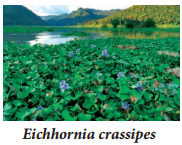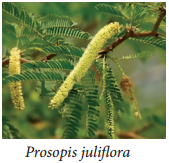Learninsta presents the core concepts of Biology with high-quality research papers and topical review articles.
Alien Invasive Species | Eichhornia Crassipes | Prosopis Juliflra
Invasion of alien or introduced species disrupts ecosystem processes, threaten biodiversity, reduce native herbs, thus reducing the ecosystem services (benefis). During eradication of these species, the chemicals used increases greenhouse gases.
Slowly they alter ecosystem, micro climate and nature of soil and make it unsuitable for native species and create human health problems like allergy, thus resulting in local environmental degradation and loss of important local species. According to World Conservation Union invasive alien species are the second most signifiant threat to bio-diversity after habitat loss.
What is invasive species?
A non-native species to the ecosystem or country under consideration that spreads naturally, interferes with the biology and existence of native species, poses a serious threat to the ecosystem and causes economic loss. It is established that a number of invasive species are accidental introduction through ports via air or sea.
Some research organisations import germplasm of wild varieties through which also it gets introduced. Alien species with edible fruits are usually spread by birds. Invasive species are fast growing and are more adapted. They alter the soil system by changing litter quality thereby affecting the soil community, soil fauna and the ecosystem processes.
It has a negative impact on decomposition in the soils by causing stress to the neighbouring native species. Some of the alien species which cause environmental issues are discussed below.
Eichhornia crassipes:
It is an invasive weed native to South America. It was introduced as aquatic ornamental plant, which grows faster throughout the year. Its widespread growth is a major cause of biodiversity loss worldwide. It affects the growth of phytoplanktons and finally changing the aquatic ecosystem.
It also decreases the oxygen content of the waterbodies which leads to eutrophication. It poses a threat to human health because it creates a breeding habitat for disease causing mosquitoes (particularly Anopheles) and snails with its free flating dense roots and semi submerged leaves. It also blocks sunlight entering deep and the waterways hampering agriculture, fiheries, recreation and hydropower.

Prosopis juliflra
Prosopis juliflra is an invasive species native to Mexico and South America. It was first introduced in Gujarat to counter desertifiation and later on in Andhra Pradesh, Tamil Nadu as a source of firewood. It is an aggressive coloniser and as a consequence the habitats are rapidly covered by this species.
Its invasion reduced the cover of native medicinal herbaceous species. It is used to arrest wind erosion and stabilize sand dunes on coastal and desert areas. It can absorb hazardous chemicals from soil and it is the main source of charcoal.
